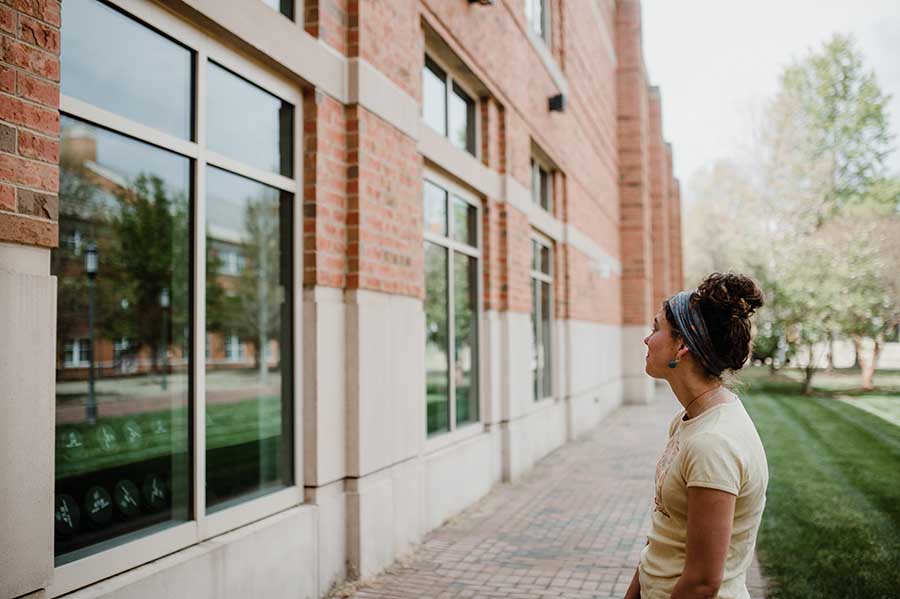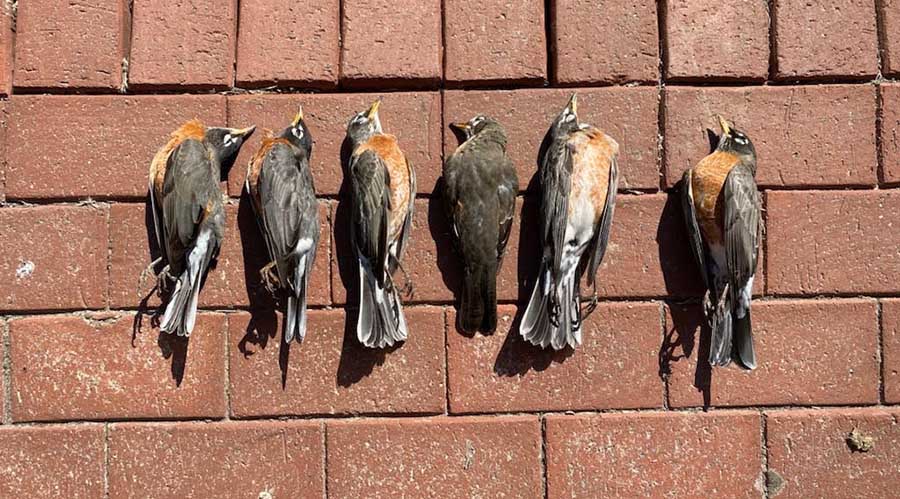Students raise awareness about bird collisions

According to a 2014 article based on 23 studies, an estimated 100 million to one billion birds are killed in the United States each year.
It’s not due to hunting or the circle of life. Rather, the cause are places that most people spend their lives — buildings. It’s the windows of offices, homes, skyscrapers and other structures, including communication towers, wind turbines and power lines, that birds run into during the course of their flights, which may stun, injure or kill them.
This is called a bird collision.
Every panel of squeaky-clean glass can be a deadly trap for birds. Since they don’t perceive glass, birds end up colliding with it. This issue has resulted in a mass mortality of birds, specifically in more urban areas.
The problem is one that often goes unnoticed. Not because of lack of care, but lack of awareness. Hannah Partridge, Chandler Horton and other students involved in the UNC Charlotte Audubon Campus Chapter are trying to change that one building at a time.

Hannah Partridge and Chandler Horton
Having always had an interest in wildlife, Partridge spent much of her undergraduate time interested in birds and is now a geography Ph.D. student in the Department of Geography and Earth Sciences.
Horton, double majoring in civil engineering and environmental science, grew up fascinated by birds and started volunteering with the Audubon Society and focused on conservation.
Together, Horton and Partridge formed the UNC Charlotte Birding Club in the fall 2021 semester. They also incorporated bird diversity awareness with the Urban Ecology Course by having students track collisions with birds and windows around campus. Students help by doing bird walks around many campus buildings including the Miltimore-Wallis Center, where there are long rows of windows.

“The windows are reflective of the outside,” said Horton. “Because of this, the birds can’t tell the difference and run into the windows.”
The students conduct bird walks three times a week and have found over 20 deceased birds so far.

Does this mean humanity never picks up a bottle of Windex again? Of course not.
“Millions of birds are killed each year due to collisions with human structures, but there are solutions,” said Horton. “Luckily new technology and design methods are being developed to allow us to have aesthetics while also protecting birds.”
Partridge suggests cost-effective solutions, such as stickers so that the birds see the glass. LED light strips are another solution, which are cheap, last a long time and use ultraviolet light that only birds can see.
One doesn’t have to be involved in the bird club or ecology class to help Partridge and Horton make campus a safer place for birds. Anyone who spots a dead or injured bird on campus can report it using the club’s Google form. People can show support for bird-friendly windows and Lights Out initiatives to help prevent future bird-window collisions.
“Bird-window collisions cause as many as one billion bird deaths each year in the United States alone,” said Partridge. “By studying the collisions on campus and which buildings are most often at fault, we can work to implement mitigation measures on campus buildings to make UNC Charlotte more bird friendly.”